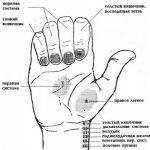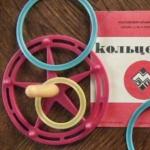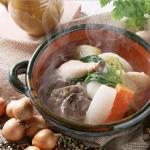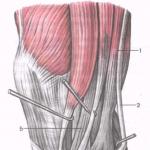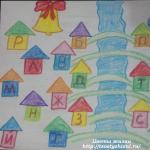How to hold Japanese wands correctly: just about the complicated. How to keep Chinese sticks
It's no secret that the Japanese eat food using wooden chopsticks.
Japanese cuisine is very popular, almost everyone has ever ordered sushi and rolls. Therefore, in order not to lose face when visiting a Japanese restaurant, or while eating a roll in a company, you need to learn how to use this cutlery.
How to hold japanese chopsticks
Today we will try to explain to you how to use Japanese chopsticks hashi. There is nothing difficult in this, even a child can learn it.
First, wipe your hands so that they are dry, and remove the towel.
We take packaging with hashi, we reveal. There are always two sticks in the set - one is non-working, the other is working.
Bottom, non-working hashi fix with your thumb on the end of the nameless. The top stick is working - we take it as we used to hold a pen.
By moving the upper, working hashi, you can safely clamp the food between it and the non-working chopstick.
Photo how to keep the sticks
Features of the use of chopsticks etiquette
During the meal, there are a number of basic rules of etiquette concerning the use of hashi, which are undesirable to violate.
- Do not forget that during the meal it is not customary to wave the chopsticks in the air and point them at people.
- You can not string the food on sticks. In addition, it is considered uncultured to drive them on the table and move plates of food with their help.
- Choose a piece that you want to eat in advance, because in Japan it is not accepted to sort out food in a plate.
- You do not need to put the hashi on the table or across the bowl - for this there is a special stand for hasioki.
- Do not stick sticks in rice and clamp them in a fist.
How to keep chopsticks video
Well, that's all, now you have learned to use Japanese chopsticks for sushi, rolls, sashimi and other Japanese food. If something remains unclear, we recommend watching the video tutorial, which explains everything in detail. Enjoy your meal!
Article Genre - Japanese Cuisine
If you like or are close to Chinese cuisine, then you probably know that it has many features. And one of them is the use of Chinese chopsticks instead of the usual for all spoons and forks. And in order to fully enjoy all the dishes and not to lose face, you need to learn how to eat with chopsticks.
A bit of history
It is believed that for the first time sticks as a device used during meals, appeared in ancient China BC. And their ancestor was invented by the Chinese Yu. He wanted to get a piece of meat from a hot pot and decided to use chopsticks for this. The Chinese call this item “quaizu” or “quaizi”, and the Japanese call it “hashi”. By the way, the Chinese sticks are longer than the Japanese.
What to eat?
What dishes are eaten with Chinese chopsticks? In principle, any that apply to Chinese or Japanese cuisine. Some common options are:
- Fig. It is common in China and Japan and is practically the main and most popular product.
- Vegetables. Chopped into small pieces and fried vegetables with sauce is also convenient to eat sticks.
- . It is also very convenient to eat using sticks.
- Sushi,. It is thanks to them that the Europeans met with Chinese chopsticks.
- Funchoza. This traditional Chinese and Japanese dish resembles ordinary noodles, but is made from starch obtained from mung beans.
How to choose suitable?
The sticks can be of different thickness and length, they are made of different materials. So, disposable sticks are made of wood, and reusable sticks can be made of plastic, metal, and even ceramics or porcelain. In addition, the ends may have different shapes.
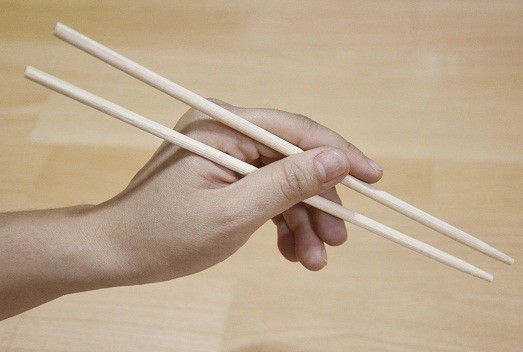
If you are a beginner, it is better to choose disposable wooden ones. They do not slip in hand, food does not slide off them. It will be convenient for a beginner admirer of Chinese cuisine to use chopsticks with relatively wide tips, since thin ones require certain skills and experience.
The optimal size can be determined by simple calculations. Place your thumb and forefinger so that a right angle forms between them. It turns out that the fingers will be the legs, and the distance between their tips will be the hypotenuse of an imaginary right triangle.
So, the length of the stick should be one and a half times (that is, half) more than the hypotenuse. But still such calculations are approximate, so rely on your feelings. Usually the length varies from 20-24 centimeters.
How to hold?
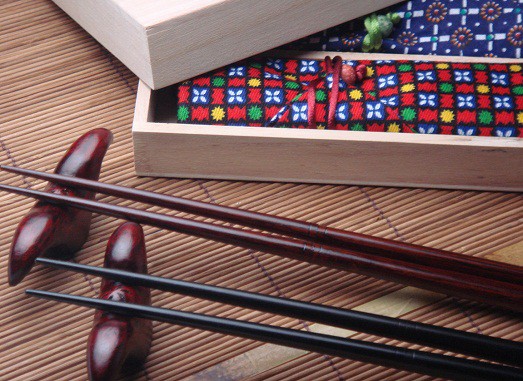
How to learn to eat Chinese chopsticks? First you need to understand how to properly hold them in your hand. So, the main stages:
- First you need to take the bottom stick. To do this, hold the ring finger and little finger together, bend them a little. A thumb should be turned inward, that is, to the palm. Now place the wide end of the wand between the palm and thumb (right at its base). Fix it with your thumb in such a way that its thin end is placed on the ring finger, namely on its third phalanx (approximately under the nail). If everything worked out for you, your index finger, middle finger, and thumb should move freely.
- Now you should take the top stick. Position it approximately parallel to the bottom and take with your thumb, index and middle fingers as you normally would with a pencil or pen. At the same time about a third of the wand (its wide end) should be placed outside of the palm.
How to take food?
All movements are made with the upper stick, that is, the middle, index and thumb. The lower stick plays a supporting role and remains motionless.
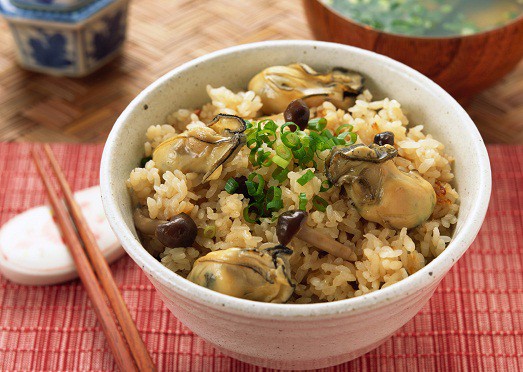
If you want to take a piece of food, then straighten the middle and index fingers, position the sticks so that the food is located between their narrow ends (not at the very tips, but about a centimeter from them, otherwise the piece may fall). Now bend your fingers and grab the food, but do not squeeze it. Do not strain your fingers, sticks can move or crush a piece.
Rules of etiquette
When using Chinese chopsticks (especially in restaurants), you should observe some etiquette rules:
- Do not stick sticks in the food, it is considered bad form.
- Do not lick sticks. Firstly, it is impolite and ugly, and secondly, if the sticks are wooden and poorly polished, then with too active licking you can leave a tongue in the lip or lip.
- The sticks are used only for food, no other use is allowed.
- Do not pass chopsticks food to another person. Instead, it is better to serve the whole dish.
- Do not swing your chopsticks, do not knock them together, do not point to anything.
- Do not hold the sticks in a fist, in China it is considered a sign of a hostile attitude.
- If you temporarily stopped the meal, then do not put chopsticks on a plate or on the table. They should be placed on a special stand, and in front of a plate and so that thin ends look to the left and up.
- From the general dish to take food is accepted the return end of sticks or special serving devices.
- Do not pick your chopsticks in the plate and even more so in the common dish.
Useful tips for beginners:
- First, master the technique of proper holding and movements.
- Practice it. First, take large or medium-sized pieces of food, then go to small ones.
- To learn how to eat Chinese chopsticks, eat them as often as possible, including at home.
- If you feel insecure, do not use sticks on people until you master this skill.
Good luck and, of course, enjoy your meal.
Japanese cuisine began an attack on our northern latitudes in the 90s of the last century. Today, the whole world pays tribute to the oriental delights - 17% of tourists prefer the exotic to the traditional food. Comfortable plugs gather dust as unnecessary. Real Japanese eat exclusively with chopsticks - hashi. And we can!
History hashi
Homeland chopsticks - China, they were invented by another 3 thousand years. Sticks came to Japan only in the 12th century, having received the name hashi. Initially, the Hashi were bamboo and resembled more tweezers. Later, the sticks were made from other materials - wood, plastic and even ivory. The Japanese do not like metal hashi, explaining that they can damage tooth enamel.
Rules for using Japanese chopsticks
The science of how to properly hold Japanese wands is not so difficult. Need to:
- take the bottom stick between the thumb and index finger at a distance of one third of the end of the stick. The thumb, index and middle fingers should form a ring;
- place the second stick parallel to the bottom one, at a distance of about 1.5 cm. If you straighten the middle finger, the sticks move apart.
There is a special stand for the chopsticks - hashioki; the chopsticks are placed on it so that their thin ends look to the left. If there is no hasioki, then you can put the hashi on the table, but not in any way across the cup.
Knowing how to properly hold Japanese chopsticks, you can condescendingly inform the waiter that samurais do not eat with training Hashi.
Hashi today
Hasi is a very personal subject. They can not be rented, for this there are disposable sticks - varibis. The size of hashi is chosen individually - the length of the sticks should be 1.5 times the hypotenuse of the triangle between the thumb and index finger.
Hashi for the Japanese is not just a cutlery. They are given for holidays and weddings. In the life of every little Japanese, the first holiday is not a birthday, but “First sticks”. When the child turns a hundred days old, they give him a hashi. It is believed that already a year children should learn to use chopsticks. Hashi develop fine motor skills of the child, which favorably affects the development of the brain and intellectual abilities.
Scientists have proven that Japanese sticks also help ... lose weight - because they can not grab a large piece of food. Nutritionists are delighted - careful chewing of small portions contributes to slow saturation and better absorption.
With young nails
How to eat chopsticks? The Chinese begin to teach their children this craft from early childhood, so even a two-year-old citizen of China is already aware of the basics. It is believed that children who use chopsticks outperform their peers with spoons in their development, but this information is questioned. But the point is not that it is difficult for a European to learn to hold two wands with his hand. After all, food with their help is not physiology, but a philosophy that reflects the process of transferring energy from food to man. And the common phrase “East is a delicate matter” is not suitable for understanding the essence of things.
Sticks are different
In their homeland, in China, chopsticks are called quaizi. Their length is 20-25 cm, they are rather thick - it is easier to use such devices. Also thick devices easier to learn to use for beginners, not knowing how to eat chopsticks. After moving to the Japanese islands, the chopsticks were given a new name - hashi. They became shorter by 5-10 cm and gained sharp ends. These ends fall on hasioki - special coasters. Hashi play an important role in a number of rituals and ceremonies of Japanese culture. Finally, the Korean version of chopsticks - chokkarak. Such devices instead of wood is made of stainless steel. Chokkarak are very thin, so only very experienced eaters can properly own them. If you were brought chokkarak in a Japanese restaurant, do not hesitate to ask the waiter for quaysu or hashi.
Chopsticks: the Chinese version
Before you learn how to eat with chopsticks, you need to learn how to hold them. From the first time, no one succeeds, so try, try and try again. Here's how to hold the quaizi correctly: one stick, which has a thickening at the end, must be placed at the base of the thumb. The thickening should be next to the thumb. The lower phalanx of the middle finger will serve as a support for a thin end. Now you need to slightly press the wand with your thumb to fix. The function of this stick is passive, supporting. Between the thumb and forefinger is placed the second wand, which is held like a pencil is usually held. They move it when they take food.
Chopsticks: Japanese
Hashi keep a little different. Here the passive wand lays down to the base of the thumb, but so that the upper third of it remains free. Approximately in the middle of the length, this stick rests on the upper phalanx of the ring finger. Thus, the thumb, index and middle fingers form a semblance of a ring. The active wand is embedded in it, held as a pencil and resting on the upper phalanx of the middle finger. All movements are made with the index finger. Before mastering how to eat sushi with hashi chopsticks, thoroughly practice. Do not squeeze your fingers - they quickly get tired. But do not overly loosen them - the chopsticks will fall out, an embarrassing situation will arise, and you will be confused and you may lose any desire to learn to eat with chopsticks further.
Subtle and very subtle nuances
To avoid their appearance, knowing and knowing how to eat with chopsticks is only half the battle. It is necessary to thoroughly study the peculiarities of food etiquette in both China and Japan. There are also significant differences here. For example, in order to make it clear that the meal is over, quaizi should be placed across the bowl with sharp ends to the left, and hashi should be placed on the hasioki or on the edge of the plate. During the meal, before you take a piece, you must first select it, and not poking around in the bowl. You cannot prick food on chopsticks; they are not licked or pushed food into their mouths. In the Japanese tradition, wands held in a fist are regarded as a threatening gesture. And stuck vertically in rice - as a direct insult: such a dish is meant for the dead before the funeral ... In general, it is not in vain that skills like the art of eating chopsticks are called art. But who has mastered this art gets more than just the pleasure of eating.
Once upon a time, and if specifically, in 1997, fate threw me on a business trip, to South Korea, the city of Incheon. I lived there for about three weeks and, therefore, I had to learn how to use chopsticks - there were no forks at the local catering establishments at all, and the prospect of starving for two dozen days in a row did not deceive me.
Immediately I must say that the chopsticks in South Korea are slightly different from similar devices from other eastern countries - South Korean chopsticks, so to speak, are flat, and made of metal. There, in Korea, I bought Japanese chopsticks as a souvenir - they turned out to be round, and Chinese sticks sold in numerous souvenir shops are very often wooden, and rectangular in section. In general, metal chopsticks are made only in South Korea, in other countries wooden sticks.
 Despite the fact that in different countries the sticks have a different shape, the principle of their use is the same everywhere, and, learning to use one type, then you can easily eat even with a pair of pencils. So, how do you learn to eat Chinese chopsticks? It turns out very easy! Everyone knows what a ring finger is? Fine! One chopstick must be placed in the palm of the palm between the thumb and index finger and on the side surface of the ring finger. Most of the length of the stick should be from the side of the plate. If everything is done correctly, the wand lies quietly on the ring finger and in the hollow between the thumb and forefinger, and the second phalanx is “fixed”.
Despite the fact that in different countries the sticks have a different shape, the principle of their use is the same everywhere, and, learning to use one type, then you can easily eat even with a pair of pencils. So, how do you learn to eat Chinese chopsticks? It turns out very easy! Everyone knows what a ring finger is? Fine! One chopstick must be placed in the palm of the palm between the thumb and index finger and on the side surface of the ring finger. Most of the length of the stick should be from the side of the plate. If everything is done correctly, the wand lies quietly on the ring finger and in the hollow between the thumb and forefinger, and the second phalanx is “fixed”.
 Next, from three fingers - the big, index and middle ones, we collect a “pinch” and take the second stick. The whole structure is as follows.
Next, from three fingers - the big, index and middle ones, we collect a “pinch” and take the second stick. The whole structure is as follows.
The first one, the lower stick, lies motionless on the ring finger and is held by the middle of the thumb, and the second is the upper stick, which is mobile and is controlled in the same way as a pencil with three fingers. Here, in general, and the whole theory - such a construction can be used as a pair of tweezers and, learning to hold Chinese sticks correctly, it is quite easy to grab pieces of food or rolls.
A few words about how to eat Chinese chopsticks. Well, as already mentioned, grab pieces of food like tweezers and carry in your mouth. But if on a plate is a piece of fish? With a little knack with chopsticks, it is fairly easy to chop food — the whole structure can work not only as tweezers, but also as a bird's beak. In this case, with chopsticks it is necessary to divide a large piece into small ones and gradually take the food into the mouth.
The most common dish in the countries of the Far East is rice. Only cook there this cereal so that it is not crumbly, and knocked into lumps. So, chopsticks can even eat rice. Due to the fact that it does not crumble, I could easily pick up a ball of rice and take it to my mouth.
A bit of etiquette. As you know, the East is a delicate matter and the knowledge of all the subtleties of using chopsticks is probably not necessary for a European person. But the main points to remember.
- The sticks are used only to take a piece of food and take it to the mouth. And not for anything else!
- Your palm and wrist are always directed downwards or towards yourself - no one should see them.
- Impaling nothing on the sticks, i.e. sticks are never used as a plug.
- Swing, knock and commit etc. chopsticks action is also impossible.
I think that after reading this article, you can feel confident in a Chinese restaurant, bistro, or if you are invited to visit, “on sushi”.

